Rock Art, Shamanism, & Subsistence in the Coso Mountains of California
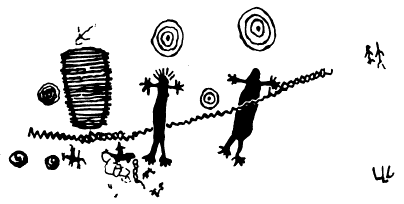
Coso Representational Style pictograph from the western Great Basin, showing representational
and abstract motifs. (From Whitley 1992:97).
At several places in the Coso mountains of eastern California, ghostly images graven in the rocks confront the modern observer. Stylized humans, dogs, antelope, and bighorn sheep share space with abstract zigzags, chains, snakes, lightning bolts and dozens of other shapes and creatures. Euroamerican visitors to the Cosos have long suspected that these figures represent ancient ritual activity—they appear, at first glance, to depict hunting and magic-making of some sort. The Shoshone and Paiute people who live here call these sites "houses of power:" places where shamans can access their poha,, ritual powers emanating from the spirit world. Since the late 1950s, archaeologists have wondered who made these figures, how old they are, and what they meant to their creators.
The Coso Mountains: Geography
The Coso Range is a low mountain chain (up to 6500 ft. above sea level) that blocks the southern end of the Owens Valley, and separates the Rose Valley, to the west, from Death Valley, to the east (Figure 1; Bettinger 1982:1–2).
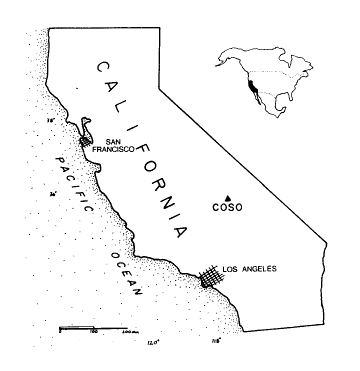
Figure 1, Location of the Coso Mountains. (After Whitley and Dorn 1987:151.)
Bettinger (1982:4–9) summarized the geography, modern climate and paleoclimate of the Coso Range. The region lies in the rain shadow of the Sierra Nevadas, making it considerably more arid than lands to the west of the Sierras; the Cosos in turn draw out what little moisture passes over the Sierras, and cast a rain shadow on Death Valley. Precipitation is substantially higher at altitude than in the valleys, with the mountains receiving about 14 in. annually, and the valleys about 4 to 8 in. annually. The biota varies by altitude and proximity to standing water, leading to a wide variety of plant communities found in a relatively small area. Valley floors are dominated by brush terrains, occasionally broken by richer riparian habitats. As one ascends from the valley floor, the biome changes from brush, to scrublands, to broken woodlands, and finally to dry ponderosa forest. In the terminal Pleistocene, the climate here was considerably more moist, with much of the valley floor dominated by shallow pluvial lakes and marshy habitats; forests and broken woodlands were found at all altitudes.
The Coso Mountains: Culture History
The coincidence, in post-Pleistocene times, of a variety of plant and animal communities in a small area, contributed to the distinctive lifeway of the Paiute and Shoshone people who lived here. Bettinger (1982) summarized the ethnography of the region’s peoples (unless otherwise noted, all statements are attributable to Bettinger 1982).
The Coso Range itself was the ethnographic homeland of the Coso Shoshone, although they shared certain ritual and food-procurement areas with other Shoshonean and Northern Paiute peoples, including their Paiute neighbors of the Owens Valley. In recent times (since contact with Euroamericans), the people living in the Owens Valley and Coso Range lived a seasonal migratory lifestyle, exploiting different environments throughout the year. Seed and plant foods, small game, fish, and waterfowl formed a large proportion of the traditional diet, supplemented by pine nuts and larger game such as deer, mountain sheep, and antelope.
The Paiute and Shoshone people lived in loosely-organized bands, centered on extended families (among the Coso Shoshone) or village-district political organizations (among the Owens Valley Paiute). Religious activities--including the production of ritual artworks such as rock art—was largely the province of specialized shamans, who obtained their offices by enduring a series of ritual hardships, and studying under the tutelage of another shaman. Although the position of shaman was technically open to anyone, in practice the majority of shamans were men, in whose families many other men were also shamans (Kelly 1939). Shamans often “specialized” in certain types of rituals, which either served a primarily social function (e.g. curing) or a political or environmental function (e.g. weather control). Shamans often practiced in seclusion, away from settlements, with the involvement of only a few helpers, if anyone else participated at all (Whitley 1994). An important center for the ritual activity of most shamans among the Coso Shoshone and Owens Valley Paiute was the Coso mountains.
Issues in Rock Art Studies
Difficulties unique to the archaeological study of rock art complicate research in this fascinating area. Unlike materials found in middens or on occupation surfaces, rock art was deliberately left for posterity; in many cases, artworks were reworked or reused, for a length of time after production. Because rock art represents deliberate, not accidental or incidental, material culture, it can help illuminate the ideologies of past peoples who have left no other written literature. Paradoxically, the essentially nonutilitarian nature of rock art produces unique interpretive difficulties for archaeologists.
Methods of Rock Art Production
The generic term “rock art” refers to images created on stone surfaces, using a variety of different techniques (Schaafsma 1986). Most researchers make the distinction between petroglyphs, works inscribed by some method in the stone, and pictographs, images painted on the surface of the stone (Busby et al. 1978; Grant 1967; Schaafsma 1986).
Rock artists create petroglyphs using two primary methods: pecking and scratching. Pecking entails striking the rock with controlled blows to remove the weathered patina and underlying rock; sometimes the contrast in color between the patination and fresh rock is strong enough to allow only shallow penetration of the rock (Busby et al. 1978). Scratched forms may be produced by incising into the rock with a tool, usually another rock; this may in turn be coupled with pecking to deepen scratched grooves, such as in Rectilinear Style motifs (Busby et al. 1978). Scratching also co-occurs with Representational Style forms and other pecked forms, where artists scratch over underlying motifs, apparently intentionally (Ritter 1993; Wellmann 1979).
In contrast to petroglyphs, pictographs are painted on the surface of the rock, with little alteration of the rock surface itself (Grant 1967). Mineral or botanical pigments, such as hematite, clays, charcoal, or plant pigments, are mixed in an adhesive solution of animal fat, soil, or resins. The mixture is applied wet to the rock wall with fingers, sticks, feathers, brushes, or other tools (Grant 1967). Researchers often assumed that painted works are less durable (and consequently younger) than petroglyphs (Heizer and Baumhoff 1967), despite the fact that some of the most venerable human artworks of any kind are pictographs—European cave paintings dating to the Pleistocene (Clottes 1993). Moreover, petroglyphs may be painted during or after construction, and painted forms may be altered by scratching or pecking (Ritter 1993).
Dating Rock Artworks
Because rock art was intended not to be buried, almost no rock artworks are recovered from stratigraphic contexts, complicating the dating of rock art. Several methods have arisen to cope with the difficulties of dating exposed artworks. Most rely on the condition of the artworks (erosion, patination, superimposition) and produce relative chronologies; a few techniques may provide absolute chronologies but are not widely accepted (Schaafsma 1986).
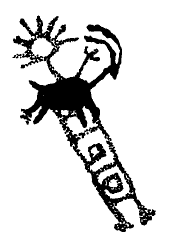
Figure 2, Superimposed motifs. The sheep figure is superimposed over the anthropomorphic
figure. (After Whitley 1994:359.)
Study of superimposed motifs--when one artwork deliberately overlaps another—provides the closest analogue in rock art studies to stratigraphic superposition. Simply put, an artwork that appears to overlie another can be assumed to be younger. Without the steady accumulation of deposits (as in stratified archaeological sites), however, the researcher cannot estimate how much younger the second artwork is. Grant et al. (1968) first addressed the superimposition of motifs in the Coso Range, noting, for example, that abstract forms tended to underlie representational forms. Wellmann (1979) undertook a more thorough analysis of superimposition, using statistical manipulation to determine which forms tended to coöccur, and overlie specific motifs. Wellmann’s focus, however, was on the inferred meaning of superimpositions, which in Coso artworks show non-random distributions and probably have some basis in ritual or artistic activity. Moreover, the apparent superimposition of forms may be an illusion created by varying methods of production. Replicative studies suggest that scratched forms often appear to overlie pecked forms, even when the reverse is true (Bard and Busby 1974).
Archaeologists can also study the degree of patination or varnishing evident on artworks, especially those inscribed by pecking or scratching. Some volcanic and sedimentary rocks, when exposed to oxygen, sunlight, moisture, and other environmental elements, acquire a patina of oxidized minerals (Grant et al. 1968:43). In desert regions this patina may be further altered by wind erosion and heat to form “desert varnish”—a glossy sheen covering exposed surfaces (Ibid). Moreover, lichens and molds can grow on exposed rocks; this growth and the slow patination of rocks are often assumed to be constant processes and can provide an insight into the dating of rock art (Schaafsma 1986). Pecking or scratching on a rock surface removes these coverings, and exposes unpatinated rock to air; freshly exposed rock then begins to patinate. Thus, if some artworks show higher degrees of patination, they are often assumed to be older than those showing lower degrees of patination (Grant et al. 1968:44–47). However, patination and lichen growth are localized phenomena; even on a single rock, some surfaces are more exposed than others, and display varying rates of patination and microflora growth (Ibid).
Studies of superimposition and relative patination have produced fairly reliable relative chronologies for the Coso Range artworks. Beginning with Steward (1929), researchers in the region have derived very similar relative chronologies, which I will detail in Rock Art Chronologies for the Coso Mountains, below. Absolute chronologies are more contentious, because so few reliable absolute dating methods are available.
Rock art sites—especially cave sites—may be associated with tools or other archaeological materials (Schaafsma 1986; Grant et al. 1968). By dating nearby materials in more certain context, a bracket of dates for the artwork may be derived. In a few instances (such as at Leonard Rockshelter in Nevada), rock art may be buried by stratified soils, providing some context for conventional dating methods like radiocarbon dating (Heizer and Baumhoff 1962). If an artwork appears to be covered by several strata, this implies that the artwork was produced sometime before the deposition of the lowest strata with which it intersects.
The subject matter of rock art can occasionally be an indication of date of manufacture. Several Coso works portray objects such as bows or particular styles of atlatl that suggest the art was produced after those technologies arrived in the area (Grant et al. 1968). In particular, the depiction of bows in association with apparent hunting scenes implies that the works were made after the arrival of the bow and arrow, probably after 200 BC (Grant et al. 1968:51). Portrayal in some images of horses, and figures wearing European-style hats, indicates post-contact dates for other works (Whitley 1992; Whitley and Dorn 1987).
Recent research suggests that radiometric dating can derive direct dates for rock artworks, although the methods employed are controversial (Dorn 1993; Dorn and Whitley 1984; Schaafsma 1986; Whitley and Dorn 1987). The most widely employed and widely accepted is the cation-ratio dating method, which relies on the relative mobility of potassium and calcium cations in desert varnish. Rainwater leaches these cations from the desert varnish at a faster rate than less-soluble cations such as titanium. By measuring the relative abundances of "fast" and “slow” cations, researchers can estimate the absolute age of the varnish, and of the rock underneath (Dorn 1993; Dorn and Whitley 1984). Dorn (1993) described the shortcomings of this approach in considerable detail. Since patination is a highly localized phenomenon, baseline data must be derived from several sites immediately nearby, on similar rock types, in order to construct local calibration curves for rates of leaching and patination. Even then, dozens of factors—weather patterns, microflora, contact with standing water, local soil chemistry, cracks in varnishes, rock surface weathering, and many others—influence cation leaching rates. Dorn proposes coupling cation-ratio dating with rigorous collection techniques, relative patination dating, and trace radiocarbon dating, where possible. He also advocates the constant cross-checking of dates with control dates taken nearby, and with dates derived using other methods. Despite the controversy surrounding cation-ratio dating, it remains probably the best direct dating method for rock art, albeit with very broad error bars (Dorn and Whitley 1984).
Identification and Interpretation of Images in Rock Art
The most hotly-debated issues in rock art studies involve the inference of meaning in art forms. Since art is generally understood to open a window into the ideational world of its creators, the interpretation of artworks allows archaeologists to represent the thoughts of prehistoric non-literate peoples. Before researchers can delve into the meaning of artworks, however, they must first identify the works, and the objects they may convey.
Very abstract artforms are often not taken to represent “art” in the modern sense at all. Grant (1967) and Minor (1975) defined art as the representation of patterned images, and claim to find little pattern in the apparently random placement of pits and grooves on stone in the earliest styles. They questioned whether these forms could illuminate the mental states of their creators in the same way as more formally-conceived and patterned works. Ritter (1993) noted that scratched forms found in conjunction with other forms represent an alteration of previous art, rather than the creation of new art, although this does not preclude the use of scratched works as a forum for discussion of past ideologies.
Another area of contention is the differentiation of styles based on methods of production. In most areas of the Great Basin, including the Coso Range, representational art forms appear to have been produced by either incision or painting (Whitley 1992), while earlier abstract forms tend to favor inscribed methods. Early researchers discriminated stylistically between petroglyphs and pictographs, inferring that works produced by incision predate painted forms, and that this represents a break in style as well as method of production (Grant 1967; Schaafsma 1986). Statistical analyses of this assertion (Pori and Heizer 1974), and a reconsideration of the ethnographic record (Whitley 1982, 1987) suggest that this distinction may not be true; that is, a representational form is as likely to be produced by either petroglyphic or pictographic methods.
Most contention in rock art studies concerns the investment of meaning in art forms. In the Coso Range, especially in later styles, the depiction of animals, human figures, and abstract forms has been variously interpreted by a parade of researchers. That interpretations of rock art would conflict seems inevitable; a review of this conflict is the central focus of my paper.
Rock Art Chronologies for the Coso Mountains
Western North American Pit-and-Groove Styles
Schaafsma (1986), Heizer and Baumhoff (1962), Whitley and Dorn (1987) and Dorn and Whitley (1984) all concurred that the earliest style is Heizer and Baumhoff’s (1962) Pit-and-Groove Style, characterized primarily by large, flat boulders with linear and circular marks pecked, battered, and incised in their surfaces. Very regular pecked dots characterize Pit-and-Groove works; the eponymous pits are typically one to two inches in diameter and cover one or more surfaces of a boulder or rock face (Heizer and Baumhoff 1962). These works evince no representation and very little regular patterning; the pits and grooves appear randomly distributed across the surface of the work. Schaafsma (1986), following Heizer and Baumhoff (1962) and Grant (1967), cited dates for Pit-and-Groove works from 7500 to 2500 b.p. Pit-and-Groove styles extend across western North America; Schaafsma (1986:216) suggested that related traditions are found throughout the continent. Heizer and Baumhoff (1962:222–223) posited an interpretation of Pit-and-Groove works, tentatively involving them in rituals concerning “antelope-surround” hunting, although they admit a lack of evidence for this hypothesis. Minor (1975) noted that, in southern California, pit-and-groove works seemed to be associated with settlements, and that later pit-and-groove art in northern California was ethnographically associated with weather magic.
Great Basin Abstract Non-Representational Styles
Steward’s (1929) stylistic analyses of Great Basin rock art provided an ordinal chronology for later styles that has withstood decades of restudy and refinement. Two Abstract Styles appear earliest: Curvilinear and Rectilinear.
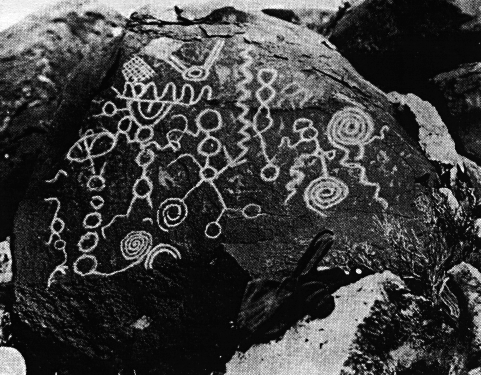
Figure 3, Curvilinear Abstract Style artworks. (From Schaafsma, 1986:217.)
Circles, spirals, concentric rings, chains, zigzags, wavy lines, meanders, snakes, suns, sunbursts and stars typify the Curvilinear Abstract Style (Figure 3). Heizer and Baumhoff (1962:206) describe Curvilinear Abstract works as distributed across Nevada, except in the extreme northeast; Schaafsma (1986:216) posits a Basin-wide distribution for this style, and for the Rectilinear Abstract Style. Using superimposition and patination dating methods, and the association of Curvilinear art with Lovelock-era cultures at Leonard Rockshelter, Heizer and Baumhoff (1962: 230–234) saw the Curvilinear Abstract Style as the oldest and longest-enduring of all styles, beginning around 3000 b.p. and extending to the late prehistoric (ca. AD 1500). In the Coso area, Grant (1962) posited an early date for Curvilinear Abstract Style works at 3000 b.p., and extends this date to possibly as late as AD 1000. Using cation-ratio dating methods, Dorn and Whitley (1983, 1984) and Whitley and Dorn (1987) arrived at absolute dates for Curvilinear style art in eastern California extending from an early end of 11,500 2250 b.p. to 525 75 (Whitley and Dorn 1987: 155). Although broad error bars in Whitley and Dorn’s dates ameliorate their effectiveness, five dates at their latest error margins (5600 b.p., 3750 b.p., 10,000 b.p., and 9250 b.p. [Whitley and Dorn 1987:155; Dorn and Whitley 1984:310]) predate Heizer and Baumhoff’s suggested absolute chronology. Overall, Whitley and Dorn suggested that the previous chronologies of Grant (1967) and Heizer and Baumhoff (1962) were ordinally accurate, and that Curvilinear artforms are indeed the oldest and longest-lived pecked and painted rock artforms in the Basin (1987:162).
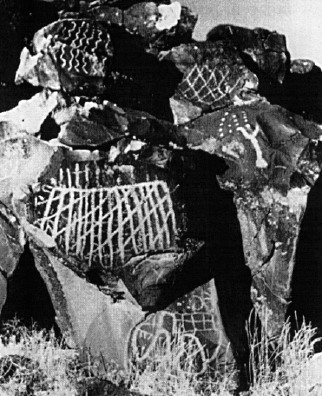
Figure 5, Rectilinear Abstract Style petroglyphs. (From Schaafsma 1986:217.)
Rectilinear Abstract Style artworks incorporate grids, bird tracks, dots, rakes, and crosshatches (Schaafsma 1986:216). Heizer and Baumhoff (1962: 207) saw the Rectilinear style as having less importance in the Basin, being more common in the southwest Basin and possibly having evolved from similar styles found in the Mojave desert and Baja California. Schaafsma (1986: 216–217) noted that Rectilinear and Curvilinear styles may co-occur in a single work, suggesting that Rectilinear motifs may be variations of Curvilinear designs, and that the Rectilinear style constitutes a subset of the Curvilinear style. Heizer and Baumhoff (1962: 234) gave absolute dates for the Rectilinear Abstract Style from AD 1 to A. D. 1500. Grant (1968) dated Rectilinear Style art in the Coso region from 200 BC to AD 300, although Whitley and Dorn’s (1987: 155) dates disagreed. Once again, Whitley and Dorn agreed with Heizer and Baumhoff’s relative chronology, but extended their dates further back (4750 BC–AD 150) and nearer to the ethnographic present (335 BC–AD 50).
Coso Representational Styles
Representational rock art styles are, in some respects, the most controversial. The Representational “style” isn’t a true artistic style (Schaafsma 1986) in that it lacks formal attributes and well-defined spatial, temporal, and cultural dimensions. Instead, Representational Styles indicate artforms that depict a physically real body in a recognizable manner. The early appearance of sun and star forms, snakes, zigzags and other potentially Representative forms in Curvilinear works suggests that the semi-formal Representative Style emerged from this longer tradition. Representational motifs dominate rock art sites in the Coso Range; Schaafsma (1986) calls this the Coso Representational Style.
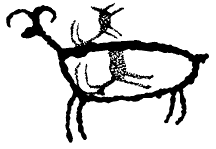
Figure 6, “Boat-shaped” desert bighorn sheep motif, superimposed over antelope motifs.
(After Grant 1967.)
Sheep motifs are the most common elements in Coso Representational art; these may be boat-shaped or stick-like, but are usually male sheep depicted in profile, with their heads often turned toward the viewer. Large-bodied anthropomorphs also predominate in Coso art, as do simpler, stick figure like anthropomorphs. Many anthropomorphs are armed, usually with atlatls or bows and arrows. Other elements include dogs, deer, enigmatic “medicine bags” or shields and, in a few panels, horses or mules with riders wearing sombrero-like hats.
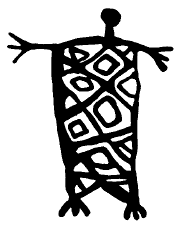
Figure 7, Patterned-body anthropomorph motif. (After Whitley 1994:359.)
No one has generated a conclusive earliest date for the first appearance of representational forms. Heizer and Baumhoff (1962:233–234) suggested an earliest date of approximately AD 1, based on the coincidence of Representational and Rectilinear styles at sites near Bishop, California, and on an intuitive analysis of differential patination. Whitley and Dorn used the controversial cation-ratio method to date a single Representational Style element at the Wheeler Prospect Site, yielding a date of 580 b.p. (no published error bar; Dorn and Whitley 1984: 314), or somewhat earlier than Grant’s (1967) hypothesized terminal date of AD 1000. Grant, et al. (1968) further divided the Coso Representational tradition into Early, Transitional, and Late periods, each of which is indicated by the dominance of particular motifs. Based on Steward’s (1929) and Lowie’s (1924) ethnographic evidence, Heizer and Baumhoff (1962) and Grant et al. (1968) held that extant peoples of the Coso Range were uninvolved in the manufacture of rock art, especially petroglyphic art.
Chronology: Summary
In general, Heizer and Baumhoff and Whitley concurred with Steward’s (1929) relative chronology. Pit-and-Groove Style works appear earliest, either by 8500 b.p. (Heizer and Baumhoff 1962) or perhaps somewhat earlier (Whitley and Dorn 1987). Curvilinear Abstract Styles appear next, probably by around 6000 or 7000 b.p. (Whitley and Dorn 1987), and continuing probably until the ethnographic present. Rectilinear Abstract Styles probably represent a subset of the Curvilinear Abstract Style, and appear 4700 years ago, and extend into late prehistory. Prehistoric Coso Range peoples began creating Representational artworks sometime before AD 1, probably as early as 600 BC While early archaeologists and ethnographers(Grant 1967; Grant et al. 1968; Steward 1929) discounted the possibility that recent Paiute and Shoshone people created rock art, the presence of datable historic subjects in some instances demonstrates that people in the Coso area painted and pecked representational forms until the recent past.
Interpretation of Coso Representational Rock Art
Researchers since Steward (1929) have approached the interpretation of Coso Representational rock art forms. Early studies focused on these artworks’ apparent connection to hunting and the depiction of game animals. Later research reexamined ethnographic literatures to postulate a variety of hypotheses implicating the role of shamans in rock art production.
Hunting Magic Hypotheses
The earliest interpretations of Coso Representational rock art linked the production of petroglyphs and paintings to sympathetic hunting magic. Heizer and Baumhoff (1962) found evidence for the co-occurance of petroglyph sites with hunting areas: corrals, narrows, draws, and watering holes. Heizer and Baumhoff suggested that desert bighorn sheep were the primary target of these magics, based mainly on the appearance of large numbers of these animals in Coso Representational Style art.
Grant’s (1967) and Grant et al.’s (1968) work further refined Heizer and Baumhoff’s original hunting magic hypothesis. Grant et al. (1967) drew comparisons with European cave paintings of the Upper Paleolithic, at that time widely interpreted as sympathetic hunting magic; they postulated that Coso Representational forms denoted a similar use. In their conjectured Early Period of Coso Representational Style art, hunters are pictured with atlatls and javelins or darts; Grant et al. hypothesized that this technique would have been relatively inefficient at bringing down bighorn sheep, and that rock art was intended to facilitate the easier capture of these animals through sympathetic magic. Nissen (1974) noted the co-occurance of corrals and surrounds with artworks depicting bighorn sheep, and suggested that the depiction of these animals may represent either sympathetic magic or a historical account of a hunt.
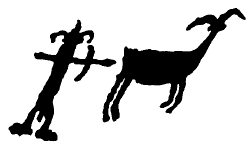
Figure 8, Hunter armed with bow and arrow, hunting bighorn sheep. (After Grant 1967.)
During Grant et al.’s (1968) conjectured Late Period, the introduction of bow and arrow technology and the increased use of hunting dogs led to an over-harvesting of mountain bighorns. Grant et al. also couple the decline in sheep populations with an increasingly drier climate after the Pleistocene, and the evaporation of pluvial lakes. As the numbers of bighorn declined, the hunters began to portray images of the animals on stone, with the goal of restoring their numbers. Grant et al. (1968) connected this ritual complex with the rise of a "sheep cult" in the late period and a fluorescence of rock art throughout the western Great Basin. Unfortunately, they hypothesized, the sheep cult ultimately failed and numbers of bighorn sheep remained small, leading to the abandonment of the cult and its attendant tradition of rock art.
Whitley (1987, 1994) disagreed with the hunting magic hypotheses, largely because of a lack of ethnographic evidence for hunting magic shamanism. Heizer and Baumhoff (1962:226–30) explained away this discrepancy by arguing that hunting magics predate the conjectured arrival of Numic peoples, and that the artists' descendants were no longer living in the area by the time of contact with Europeans. Whitley (1994:300) rightly exposed the tautology inherent in this thinking: "if the ethnography did not support their inductive interpretation, [Heizer and Baumhoff, and Grant] argued, then the art must be older than ethnographic Numic culture." Growing evidence for continuity in "pre-Numic" and "late prehistoric" art (such as the appearance of bows and arrows, and historic figures such as horses and riders, alongside older sheep and antelope motifs) suggest that these early chronologies—and the Hunting Magic hypothesis—are subject to question.
Neuropsychological Hypotheses
By the late 1980s, synthetic rock art studies had generated a new theory of rock art production, linking the production of rock art to religious experiences and trancelike altered states. Lewis-Williams and Dowson (1988), seeking to understand the cultural role of rock art during the Upper Paleolithic, turned to psychological and archaeological literature from around the world.
“Trancelike states” refers to an altered state produced by any number of stimuli, such as the ingestion of hallucinogenic drugs, sleep and food deprivation, profound sensory deprivation, physical pain (e.g. flogging or self-flagellation), or any combination of these stimuli. Lewis-Williams and Dowson found that, in modern psychological test subjects, hallucinatory visual motifs produced during trancelike states progressed in a regular fashion, regardless of the subjects' cultural background. In Stage 1, subjects noted the appearance of geometrically-regular flashes of light and color, known as entoptic phosphenes, which often appear as grids, lines, zigzags, dots, sparks, spirals, and other regular forms (Figure 9). Entoptic images eventually give way to images conjured up by the subconscious mind, which tries to contextualize the entoptic visions by superimposing them on familiar images. Lewis-Williams and Dowson called these images “construals.” Kalahari San informants, for example, reported seeing antelope, rhinoceros, and other important animals; British informants reported everyday objects such as toasters, televisions, and pets. In Lewis-Williams and Dowson’s final stage of an altered state, construals are gradually incorporated into entoptic forms and more easily grasped by the conscious mind. This occurs as the hallucinatory power of the trance subsides, and the rational mind attempts to make sense of the trance experience. Lewis-Williams and Dowson call these images “iconics,” a combination of geometric forms and representational forms.
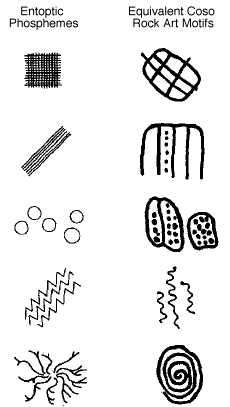
Figure 9, Geometric entoptic phosphenes and Coso Representational Style motifs that
may depict them. (After Lewis-Williams and Dowson 1988:206.)
Lewis-Williams and Dowson (1988) claimed to have found evidence for the depiction of all three neuropsychological stages in rock art from around the world, especially in Great Basin representational art, and the shamanic art of the Kalahari San. They note that these same stages appear to be present in both San and Great Basin art, as well as “hunting” images of the European Upper Paleolithic. Lewis-Williams and Dowson linked trancelike altered states with shamanic visions throughout time and around the world, and posited that these visions may have a biological basis.
Bednarik (1990) raised objections to Lewis-Williams and Dowson’s treatment of entoptic phosphene motifs on two grounds. First, “pre-iconic” artforms (i.e. resembling abstract entoptic phosphene motifs) are found ethnographically and in psychological studies to have been produced by individuals in a variety of mental states, not just in trancelike states. Second, in many instances, entoptic phosphene art is not necessarily a function of shamanic ritual, and may be produced by any number of individuals (not only shamans), including children. However, as applies to Coso Range art, both criticisms may be less devastating than for artworks in other parts of the world, since Whitley claims that ethnographers have noted that shamans, altered states, and rock art all seems to form a related cultural complex for western Great Basin peoples (Kelly 1939; Steward 1929:226).
The neuropsychological/shamanic theory revolutionized the study of rock art around the world. Rock art came to be interpreted as a byproduct of vision quests, often associated with shamanic seclusion and the intentional induction of altered states. Whitley, already an early opponent of the hunting-magic hypotheses of earlier researchers (Whitley 1982), found in the neuropsychological theory a model for the explanation of Coso Rock art as linked with seclusionary shamanic rituals (Whitley 1987). In contrast to art produced by peoples living west of the Sierra Nevada, the rock art of the Coso Range apparently occurred a long distance away from established settlements, often in caves or other hidden places. Whitley (1987) saw this as evidence for the creation of rock art during shamanic ceremonies or initiation rites that involved the ritual seclusion of the participants; while rock art west of the Sierra was produced during rituals involving (or at least witnessed by) several members of a community (Whitley 1987:177–181). Seclusionary rituals may have involved the intentional induction of trancelike states, as proposed by Williams-Lewis and Dowson (1988) and Whitley (1992; 1993). Whitley’s (1993) reading of the ethnographic record for the region closely linked shamanic rituals, altered states, and rock art. The context of the construction of these artforms--in seclusion, during private rituals, without the involvement of the entire community—seemed fairly certain, but left open an important question: for what purpose did the artists create their works?
Weather Shamanism Hypotheses
Whitley’s (1994) latest reading of rock art posited that an apparent rise in rock art during the conjectured “Numic” phase (after AD 1200) was related to an increase in weather shamanism and shifts in subsistence patterns at this time. Whitley noted two themes in the ethnographic literature: that shamans received poha, or shamanic power, from specific symbols during visions, and that they sought these visions at specific places, often rock art sites.
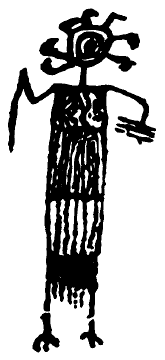
Figure 10, Anthropomorph with features resembling ethnographic accounts of a weather
shaman, including atlatl, quail-topknot headgear, and stick bundle. (From Whitley
1994:363.)
The Coso Shoshone and Owens Valley Paiute peoples practiced specialized shamanism: rattlesnake shamans usually cured rattlesnake bites, horse cure shamans tended horses, rain shamans or weather shamans could influence rainfall (Whitley 1994:362). Each type of shaman had particular paraphenelia he carried with him (the great majority shamans were men), and communicated with particular symbols. Weather shamans carried mountain-sheep horn bullroarers and a spear or atlatl for the ritual slaying of mountain sheep, and wore mountain-sheep caps with quail topknot tufts (Kelly 1936:137–160; Whitley 1994:362). The central act of weather shamanism was dreaming of bighorn sheep--perhaps in a trancelike state (Kelly 1936:138–142; Whitley 1994:362). Depiction of figures bearing similarities to ethnographic descriptions of weather shamans have been found in the Cosos (Figure 10). Moreover, the Coso Mountains were widely regarded by other Great Basin groups as a ritual center for rainmaking; weather shamans traveled from across the western Basin to practice weather magic there (Zigmond 1977:89, in Whitley 1994). It seems reasonable to suppose that by ethnographic times, representational art in the Cosos signified weather shamanism, not hunting shamanism.
Whitley (1994) continued with the weather shamanism hypothesis to link the rise in shamanic rock art with a shift in subsistence to gathered foods after about AD 1200. As hunting—especially the hunting of larger game such as bighorn sheep—became less prominent, the people relied more and more heavily on ”gathered” food—fish, small game, plant foods, seeds, and nuts. Whitley (1994:364–369), saw the new subsistence practices as dominated by women, and threatening a system of masculine prestige which maintained asymmetrical power relationships (men more important than women; shamans more important than non-shamans). The new female-controlled gathering strategies defied the old asymmetry, which was sustained by the demonstration of ritual power and hunting prowess. Weather shamanism—through the ritual hunting of bighorn sheep—allowed male shamans to maintain social control. By killing bighorn sheep in their trances, shamans could regain control of food-gathering (which was visibly dependent on rain) as well as maintain boasting rights for hunting big game.
Understanding Rock Art in the Coso Mountains
Approaching a workable theory for the production of rock art—in the Coso Mountains or anywhere else—requires the conquest of several methodological difficulties. Using a variety of dating techniques (as outlined above), archaeologists can derive reasonably accurate ordinal sequences; these are very difficult to pin to absolute dates, however. Similarly, the association of artworks with particular social groups or subgroups—a venerable tradition in rock art research—may also be flawed (Clottes 1993). Ascribing meaning to rock art (ostensibly the goal of most rock art research) may be impossible except where an extant group is demonstrably related to the artists. Otherwise, archaeologists risk imposing their own interpretations on the artworks, and finding evidence for those interpretations through “unbiased“ research (Frison 1993). I propose that by evaluating the weaknesses of competing theories—and then noting where those theories do not contradict one another—I can extrapolate yet another working hypothesis for the construction of Coso Representational Style rock art.
Critique of the Hunting Magic Hypothesis
After fifteen years of lambasting by Whitley (1982, 1987, 1992, 1993, 1994), Ritter (1993), and Rector (1985), the Hunting Magic Hypothesis has become the Straw Man of modern rock art theory. Lacking ethnographic evidence for hunting magic (Whitley 1994), the theory is plausible only if hunting magic practices have been somehow lost. Grant et al. (1968:39–42) proposed that this may be due to the outmigration or extinction of hunting magic practicing peoples. I have already addressed Whitley’s objection to this tautology, and would further offer that such an argument follows from negative evidence: since there is no evidence for hunting magic today, then the hunting magic must have died out. While I cannot deny this possibility, neither can I affirm it, since then any theory becomes plausible. (“Perhaps the sheep themselves painted the images. Why don’t we see sheep doing this any more? Because all of the artist sheep died out.”) Moreover, the continuation of hunting motifs until the contact period (based on the co-occurance of these motifs with horse-and-rider motifs, Whitley 1993), further calls Grant et al.’s (1968) explanation in question. However, the close physical association of hunting images to good hunting places (Grant et al. 1968; Nissen 1974) provides strong circumstantial evidence for the theory; I cannot dismiss hunting magic so easily as Whitley.
Critique of the Neuropsychological Hypothesis
Lewis-Williams and Dowson’s (1988) neuropsychological hypothesis has held up better than the hunting hypothesis, at least as it applies to Coso Representational art. This is due in no small part to Whitley’s favoritism; Lewis-Williams and Dowson have not fared as well in other parts of the world. While critics (Bednarik 1990) have raised objections to the application of the hypothesis, Whitley (1987, 1992) has rallied enough ethnographic evidence to bolster neuropsychological explanations of Coso Representational art. Like Bednarik, I question the inferred biological basis for the representation of entoptic phosphenes—they need not have been produced during altered states. On the other hand, Whitley has demonstrated that the Coso and Owens Valley people have a tradition of shaman elites, who practice particular kinds of magic at rock art sites, often during trancelike states. Ultimately, however, I find the Neuropsychological hypothesis uncompelling, since it lacks an explanatory mechanism. Lewis-Williams and Dowson tell us why certain kinds of shapes reappear in rock art, but they cannot tell us for what purposes those artworks were created. They simply aren’t asking the right question. This is something like studying the geometric rationale for the use of the Golden Rectangle in classic Greek temple architecture, without studying the use of the temples themselves.
Critique of the Weather Shamanism Hypothesis
Whitley’s (1994) weather shamanism hypothesis offers some of the best explanatory tools, as well as raising interesting interpretive concepts that prove impossible to test. Assuming Whitley is presenting the ethnographic literature fairly—and my reading of the same literature suggests he is—then strong (albeit circumstantial) evidence exists for the weather shamanism hypothesis. Most compelling are anthropomorphic images displaying elements of weather shaman costume, as well as evidence for the Cosos being a center for weather magic for people across the Great Basin. By late prehistoric and contact-era times, the weather shaman hypothesis represents the best explanation of the role of Coso Representational rock art.
Whitley may have overextended himself, however, in linking an apparent rise in weather shamanic art with changes in subsistence. This particular house of cards rests a table with four wobbly legs: 1) a conjectured shift in subsistence to gathered foods around AD 1200; 2) the dominance of men in the old (hunting) economy and women in the new (gathering) economy; 3) the association of bighorn sheep hunting motifs with weather shamanism before ethnographic times; and 4) an observable increase in bighorn sheep hunting motifs at around the same time as the shift in subsistence. The failure of any of these legs would bring down Whitley’s carefully constructed card house. Moreover, the weather shamanism hypothesis lacks explanatory antecedents. That is, what did shamans depict before they depicted bighorn sheep for weather control? Did this symbolic system arise spontaneously, or did it evolve from some other artistic complex—such as Curvilinear Abstract artworks? In the end, I find the weather shamanism theory to be an intriguing possibility, but with only as much evidence as the hunting magic hypothesis.
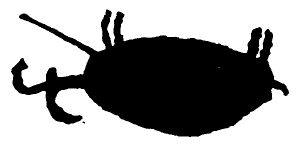
Figure 11, “Killing a bighorn sheep.” (From Whitley 1994:363.) Do images such as this
represent attempts to improve the bighorn sheep hunt? To revive the declining sheep
population? To influence the weather, and control subsistence patterns and the nature
of society? Or something else altogether?
Toward an Understanding of Rock Art in the Coso Mountains
Competing theories for the social role of rock art in the Coso Mountains are not irreconcilable. While the main theories may contradict one another in some places, and rest on untestable assertions in others, my review of literature in this area has revealed certain key points with good supporting evidence:
- In the Coso Mountains, rock art likely represents some kind of shamanic art, and the practice of shamanic ritual in secluded places away from large settlements (Whitley 1987, 1992, 1993). These rituals may or may not have involved the induction of trancelike states (Lewis-Williams and Dowson 1988, Whitley 1987); I ultimately see this point as moot, when attempting to understand the social context (rather than the mechanism) for rock art production.
- Rock art sites may co-occur with good hunting sites; they feature hunting scenes as key elements (Heizer and Baumhoff 1967; Grant et al. 1968; Nissen 1974). The animals depicted as game, however, may not have contributed significantly to the diet of the artists (Whitley 1982; Rector 1985).
- By the historic period, weather shamans practiced their craft at rock art sites in the Coso Mountains; a key feature of weather shamanism was the symbolic hunting of bighorn sheep (Kelly 1939; Steward 1929; Whitley 1994).
- Representational art forms may predate the arrival of the bow and arrow around 1500 to 2000 years ago (Grant et al. 1968); the depiction of these forms continued until sometime in the past 300 years (Whitley 1982; 1992).
These assertions suggest several plausible models for the evolution of Coso Representational Style art. From existing models, I can synthesize the following sequence:
Sometime around or shortly after the introduction of the bow and arrow into the western Great Basin (about 500 BC), artists began to depict the hunting of bighorn sheep and other large game. They may have chosen the places for their artworks based on proximity to good hunting sites; by AD 1200 or so, the dominant theme of Representational Style art was the depiction of bighorn sheep hunting. This symbolic complex may represent a ritual system peripheral to big-game hunting, although no ethnographic evidence remains for this practice. Whatever the reason, by the time of contact with Europeans and Americans (around 300 years ago), the bighorn sheep hunting motif was associated with weather magic. Assuming that bighorn sheep hunting scenes were not always associated with rainmaking, I can envision a way in which the two systems were related. Perhaps hunting magic—which would have appeared increasingly ineffective as the numbers of large game declined between 500 BC and AD 1200—had been transformed for some reason into weather magic. Places that had been good for big game hunting—rock art sites associated with wealth and plenty—still had enormous symbolic power, and weather shamans returned to these places to rework the now-ancient artworks. They may have used the same bighorn sheep motifs to influence the weather, that once were used to influence game. After as much as 1700 years of constant reuse, rock art locales had become powerful symbols of the connection with the spirit world, from which shamans obtained their power to bring wealth to themselves and to their communities.
References Cited
- Bard, James C. and Colin I. Busby
- 1974 The Manufacture of a Petroglyph: a Replicative Experiment, in Four Great Basin Petroglyph Studies, pp. 83–102. Contributions of the University of California Archaeological Research Facility no. 20, Berkeley: University of California.
- Bednarik, Robert S.
- 1990 On Neuropsychology and Shamanism in Rock Art, Current Anthropology 31: 77–80
- Bettinger, Robert L.
- 1982 Archaeology East of the Range of Light: Aboriginal Human Ecology of the Inyo-Mono Region, California. Monographs in California and Great Basin Anthropology, No. 1. Davis, California: Foundations for the Publication of Monographs in California and Great Basin Anthropology.
- Clottes, Jean
- 1993 Who Painted What in Upper Paleolithic European Caves. In New Light on Old Art: Recent Advances in Hunter-Gatherer Rock Art Research, David S. Whitley and Lawrence L. Loendorf, eds., pp. 1–8. Institute of Archaeology, University of California, Los Angeles, Monograph 36.
- Dorn, Ronald I.
- 1993 Dating Petroglyphs with a Three-Tier Rock varnish Approach. In New Light on Old Art: Recent Advances in Hunter-Gatherer Rock Art Research, David S. Whitley and Lawrence L. Loendorf, eds., pp. 13–36. Institute of Archaeology, University of California, Los Angeles, Monograph 36.
- Dorn, Ronald I. and David S. Whitley
- 1984 Chronometric and Relative Age Determination of Petroglyphs in the Western United States. Annals of the Association of American Geographers 74(2):308–322.
- Frison, George C.
- 1993 Afterword: Prehistoric Rock Art and the Study of Archaeology. In New Light on Old Art: Recent Advances in Hunter-Gatherer Rock Art Research, David S. Whitley and Lawrence L. Loendorf, eds., pp. 105–108. Institute of Archaeology, University of California, Los Angeles, Monograph 36.
- Grant, Campbell
- 1967 Rock Art of the American Indian. New York: Crowell.
- Grant, Campbell, James W. Baird, and J. Kenneth Pringle
- 1968 Rock Drawings of the Coso Range, Inyo County, California. China Lake: Maturango Museum.
- Heizer, Robert F. and Martin A. Baumhoff
- 1962 Prehistoric Rock Art of Nevada and Eastern California. Los Angeles: University of California Press.
- Kelly, Isabel T.
- 1939 Southern Paiute Shamanism. Anthropological Records, 2(4):151–167.
- Lewis-Williams, J. D. and Thomas A Dowson
- 1988 The Signs of All Times: Entoptic Phenomena in Upper Paleolithic Art. Current Anthropology 29(2): 201–245
- Minor, Rick
- 1975 The Pit-and-Groove Petroglyph Style in Southern California. San Diego Museum of Man Ethnic Technology Notes No. 15. Balleena Press, San Diego.
- Nissen, Karen M.
- 1974 The Record of a Hunting Practice at Petroglyph Site NV-LY-1, in Four Great Basin Petroglyph Studies, pp. 53–82. Contributions of the University of California Archaeological Research Facility no. 20, Berkeley: University of California.
- Rector, C.
- 1985 Rock art as hunting magic: Anthropological fact or fiction? Rock Art Papers, 2:127–132. San Diego Museum Papers 18. San Diego.
- Ritter, Eric W.
- 1993 "Scratched Rock Art Complexes in the Desert West: Symbols for Socio-Religious Communications" in New Light on Old Art: Recent Advances in Hunter-Gatherer Rock Art Research, David S. Whitley and Lawrence L. Loendorf, editors, pp. 51–66. Los Angeles: Institute of Archaeology, University of California, Monograph 36.
- Schaafsma, Polly
- 1986 Rock Art. In Handbook of North American Indians, vol. 11, Great Basin, pp. 215–216. Washington D.C.: Smithsonian Institution.
- Steward, Julian
- 1929 Petroglyphs of California and Adjoining States. University of California Publications in American Archaeology and Ethnology vol. 24 no. 2. Los Angeles: University of California.
- Wellmann, Klaus F.
- 1979 A Quantitative Analysis of Superimpositions in the Rock Art of the Coso Range, California. American Antiquity 44(3): 546–556.
- Whitley, David S.
- 1982 Notes on the Coso Petroglyphs, the Etiological Mythology of the Western Shoshone, and the Interpretation of Rock Art. Journal of California and Great Basin Anthropology 4(2): 262–272.
- 1987 Socioreligious Context and Rock Art in East-Central California. Journal of Anthropological Archaeology 6: 159–188.
- 1992 Shamanism and Rock Art in Far Western North America. Cambridge Archaeological Journal 2(1): 89–113.
- 1993 "Ethnography and Rock Art in the Far West: Some Archaeological Implications" in New Light on Old Art: Recent Advances in Hunter-Gatherer Rock Art Research, David S. Whitley and Lawrence L. Loendorf, editors, pp. 81–93. Los Angeles: Institute of Archaeology, University of California, Monograph 36
- 1994 By the Hunter, For the Gatherer: Art, Social Relations and Subsistence Change in the Prehistoric Great Basin. World Archaeology 25(3): 356–373.
- Whitley, David S. and Ronald I. Dorn
- 1987 Rock art Chronology in Eastern California. World Archaeology 19(2):150–164.